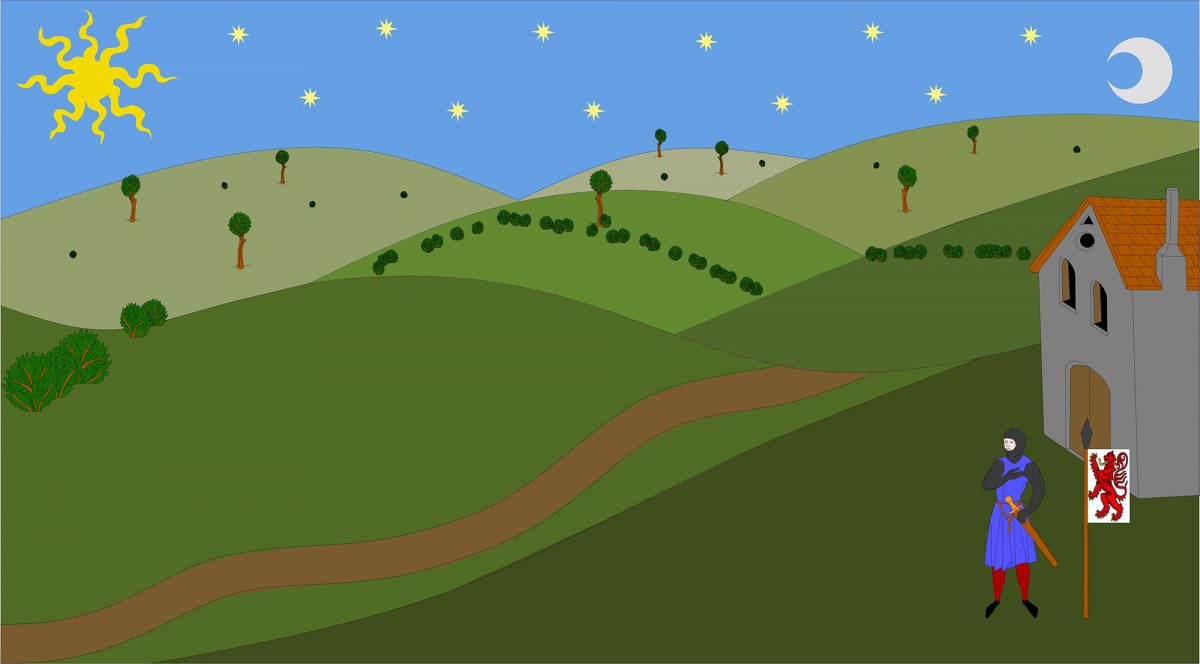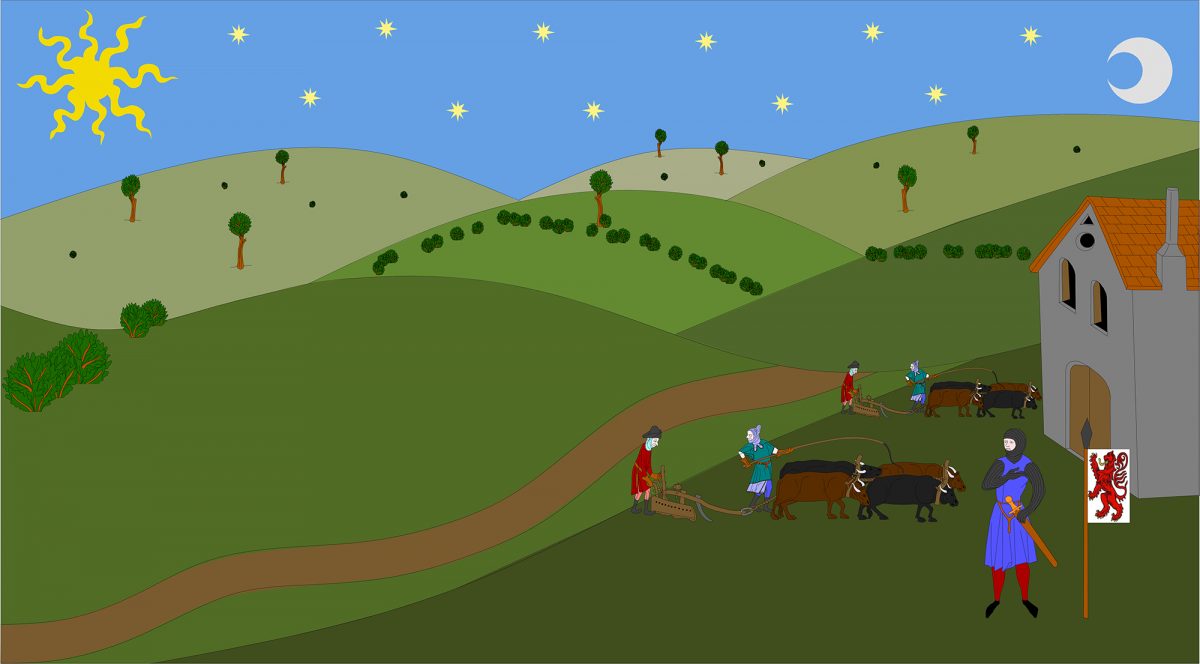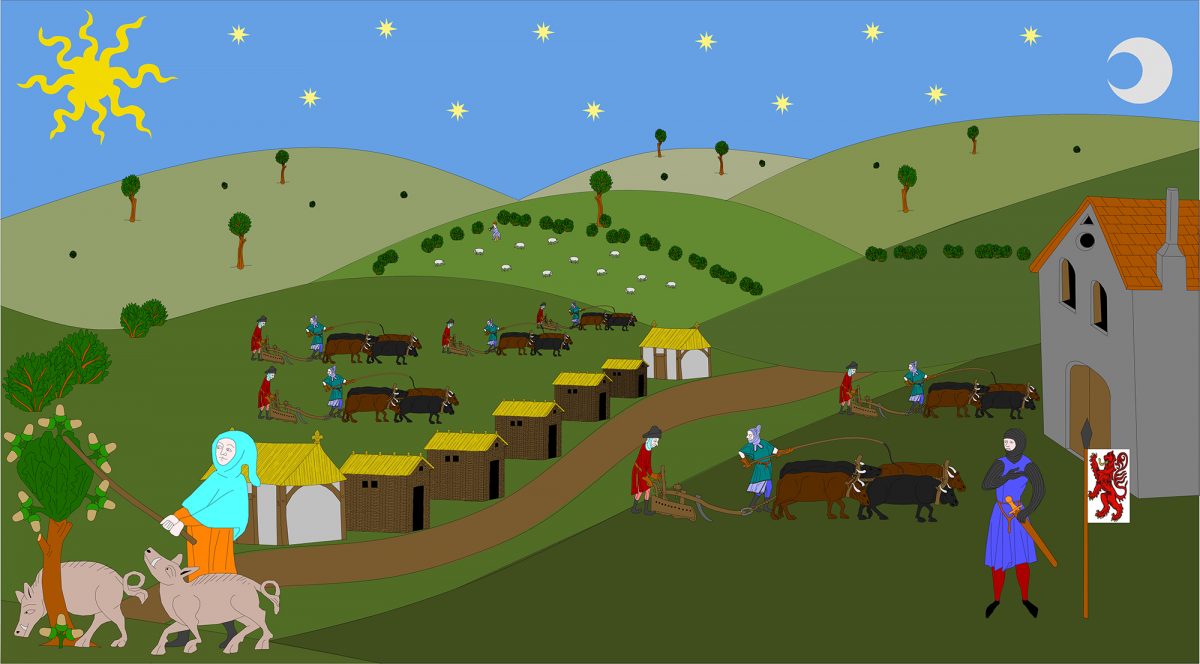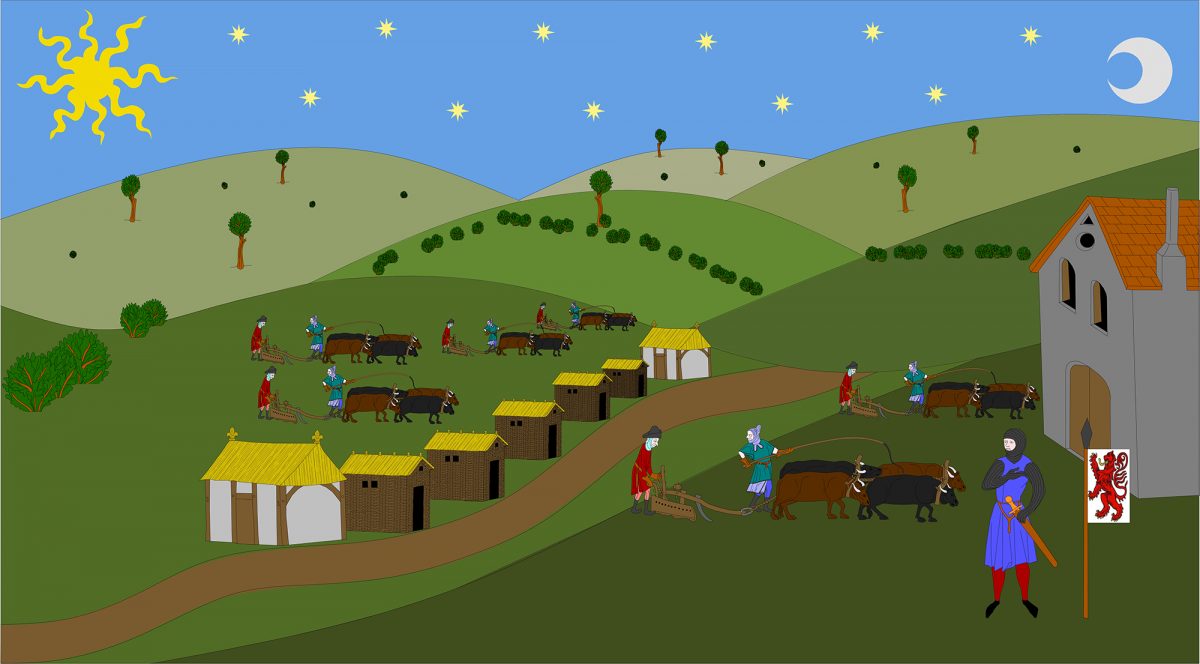The Domesday Book
Discovering the Medieval Origins of your Village
Topic 2: The Domesday Book
Having established the ancient origin of a settlement, we can now look at one of the most significant and comprehensive historical records available; The Domesday Book.
1086 Survey
The Domesday Book is a survey carried out on the orders of William I in 1086 to assess every manor in the country for taxation.
For many settlements this is the earliest historical record we have, and as it gives an indication of land use and population at the time, it is also very useful for picturing what the early medieval village was like.

Online image of the Domesday entry for Stenigot.
Accessing the Domesday Book
Fortunately, the Domesday survey has been translated and published and is available in libraries and online:
Language
Nowadays the language used in the Domesday survey can seem inaccessible and off putting, but with a little advance knowledge it can be rewritten in a more understandable form.

In Stenigot

3 carucates of land taxable

Land for 3 ploughs.

Ivo has 2 ploughs.

23 Freemen

5 Villagers

have 4 ploughs.

Meadow, 120 acres

underwood, 20 acres.
Translating the Domesday book
So, using the example of Stenigot in Lincolnshire, we will demonstrate how a millennium old text can be translated for a modern audience.
The description is as follows.
“In Stenigot 3 carucates of land taxable. Land for 3 ploughs. Ivo has 2 ploughs. 23 Freemen and 5 Villagers have 4 ploughs. Meadow, 120 acres; underwood, 20 acres.”
This passage, which will appear to be some sort of medieval shopping list, actually contains a lot of information in a very condensed form.
So, let’s take it in small sections and make some sense of it…
Finding an entry
If you are using the online index, just select your village.
If you are using a printed form of the book, you will need to look up the name of your village in the place name index, this will give you a reference made up of two numbers: Stenigot 14, 52. These are not page numbers, but are more like chapter and verse numbers found in bible references. Each landowner gets their own chapters, and the first number refers to that chapter. In the case of Stenigot, chapter 14 is devoted to the lands of Ivo Tallboys. The second number is the number of the passage, with each passage referring to a manor held by the landowner.
It is worth noting that some places had more than one manor, sometimes belonging to different land owners. In the case of Stenigot, there was one manor which was described in the 52nd passage of the chapter.
In Stenigot 3 carucates of land taxable
The first two words establish the existence of a manor (an area of land owned by a lord) in a place called Stenigot. It then begins to list the things that belonged to than manor; 3 carucates of land. A carucate was a measure of land, roughly 120 acres. In some parts of the country the term Hide was used in its place. The last word (taxable) tells us that this is an overall assessment of the size of the manor for the purposes of raising taxes for the king.
So, we can translate this first line as: “Ivo Tallboys has a manor in the place called Stenigot that covers 360 acres of land.”

The next two sentences begin to give more detail.
Land for 3 ploughs. Ivo has 2 ploughs.
The first sentence tells us that there is enough farmland for 3 teams of ploughs, each with 8 oxen, to plough each year (this tallies with the 360 acres above), but the second sentence tells us that Ivo Tallboys has only 2 plough teams (2 ploughs and 16 oxen). This tells us that Ivo Tallboys is not using all of the land himself.

The account then lists who else is using the land:
23 Freemen and 5 Villagers have 4 ploughs.
This is the first indication that the manor includes a village. The Domesday survey lists the heads of households according to their rank within the feudal system. Freemen could hold land and were free of duties to the lord of the manor, villagers could hold land, but had to provide service for free to their lord. It is safe to assume that for each Freeman and Villager listed, there would be a house and family. In this case they also owned 4 ploughs and 4 teams of 8 oxen.
“Ivo Tallboys has a manor in the place called Stenigot that covers 360 acres of land. Most of this land is used for farming. Ivo farms at least half of it with 2 plough teams, each consisting of a plough and 8 oxen. The remainder of the farm land contains 28 homes and families who have 4 plough teams between them. 5 of the families have to work for Ivo for free.”

The final section describes land that is not under cultivation is taxed separately.
Meadow, 120 acres; underwood, 20 acres.
Meadow was grassland, often used for grazing livestock, including the 48 oxen for the ploughs, whereas the underwood indicates woodland that may have been used for grazing pigs.
“Ivo Tallboys has a manor in the place called Stenigot, that covers 360 acres of land. Most of this land is used for farming. Ivo farms at least half of it with 2 plough teams, each consisting of a plough and 8 oxen. The remainder of the farm land contains 28 homes and families who have 4 plough teams between them. 5 of the families have to work for Ivo for free. Around the estate is 120 acres of meadow for grazing sheep, cattle and oxen, and 20 acres of woods, where pigs are sometimes kept.”

Younger villages
If your village is not in the Domesday Survey, then it means that it was established after 1086. To find evidence of the medieval layout we will have to look elsewhere. Starting with the landscape itself.
